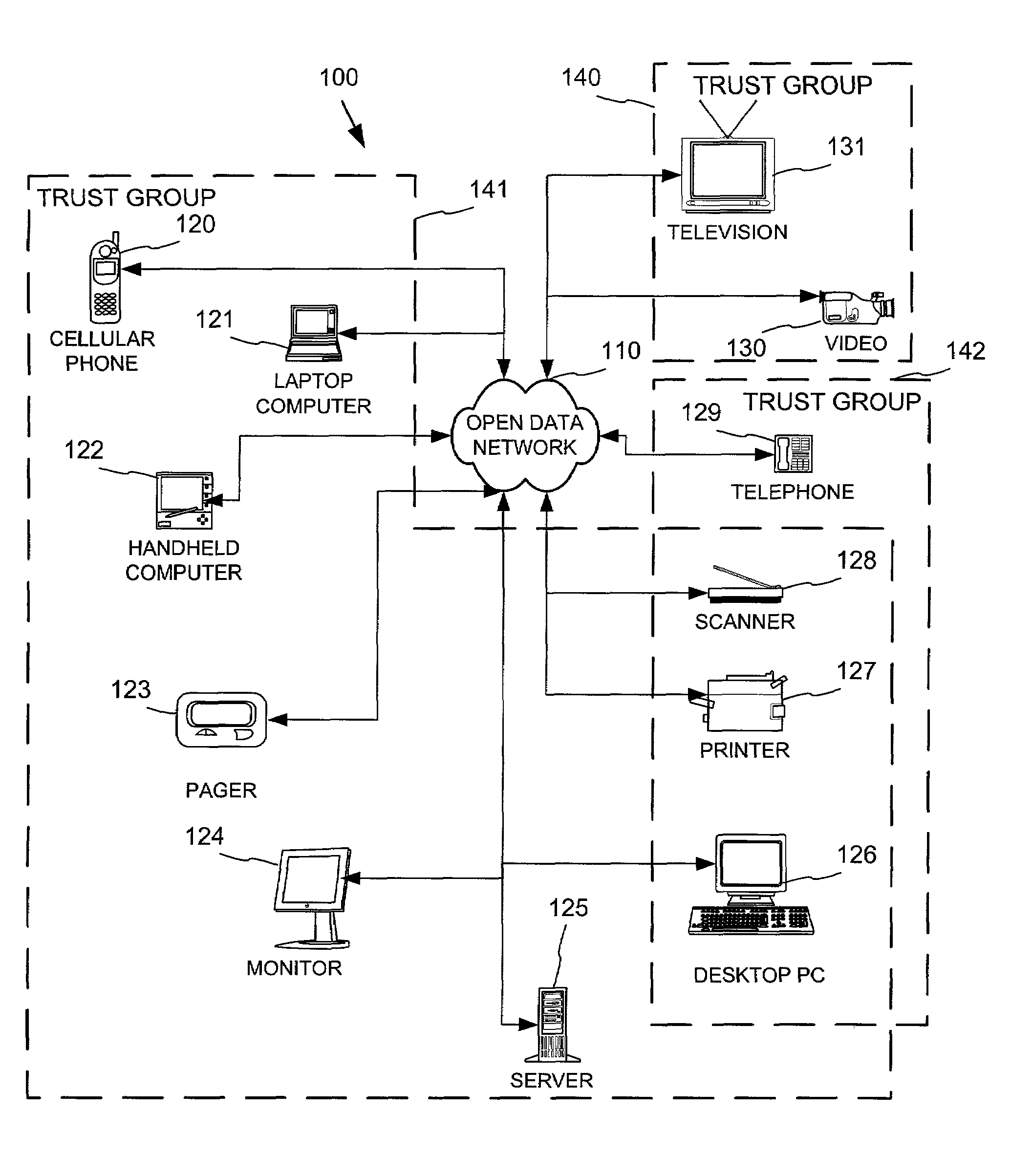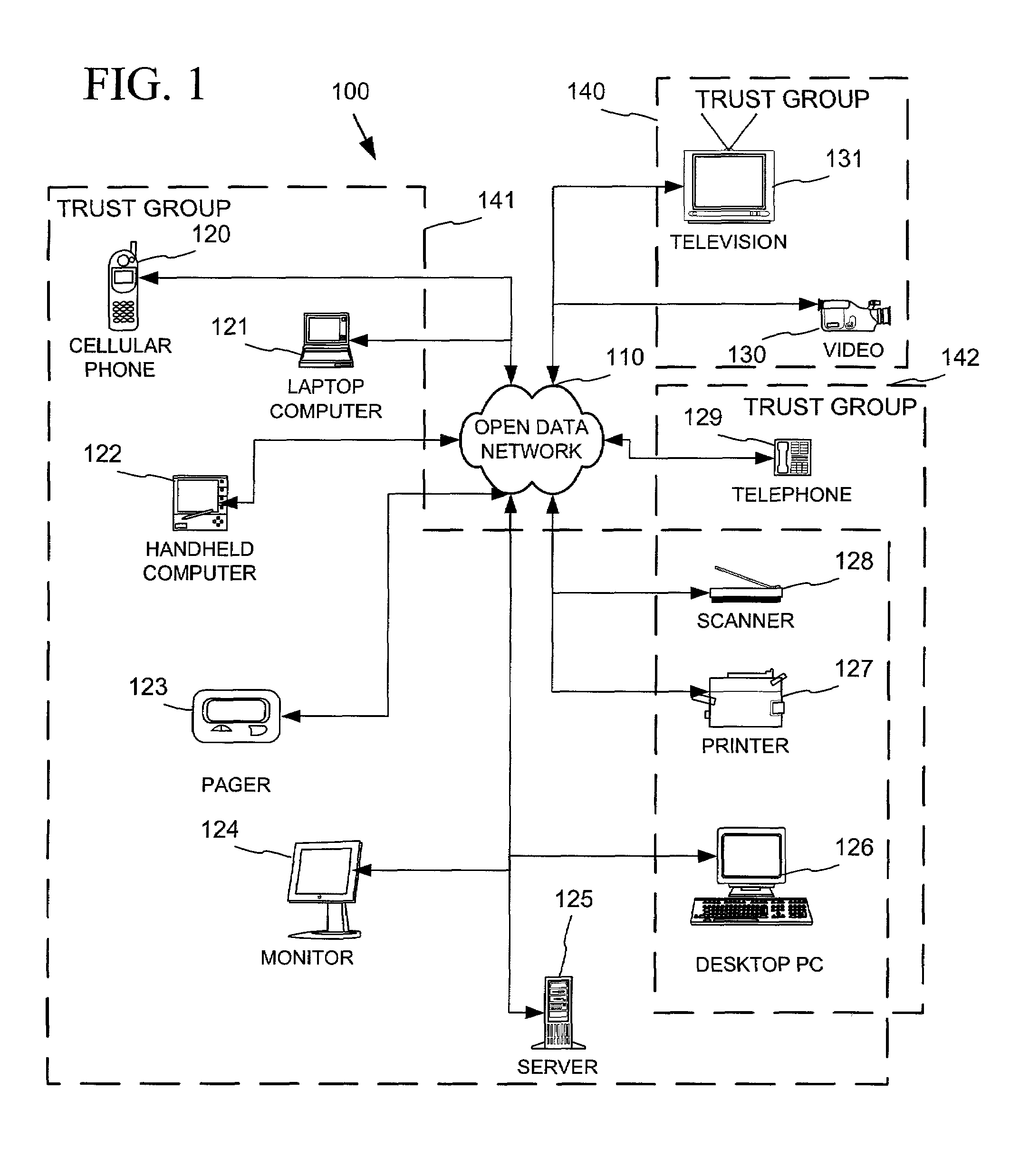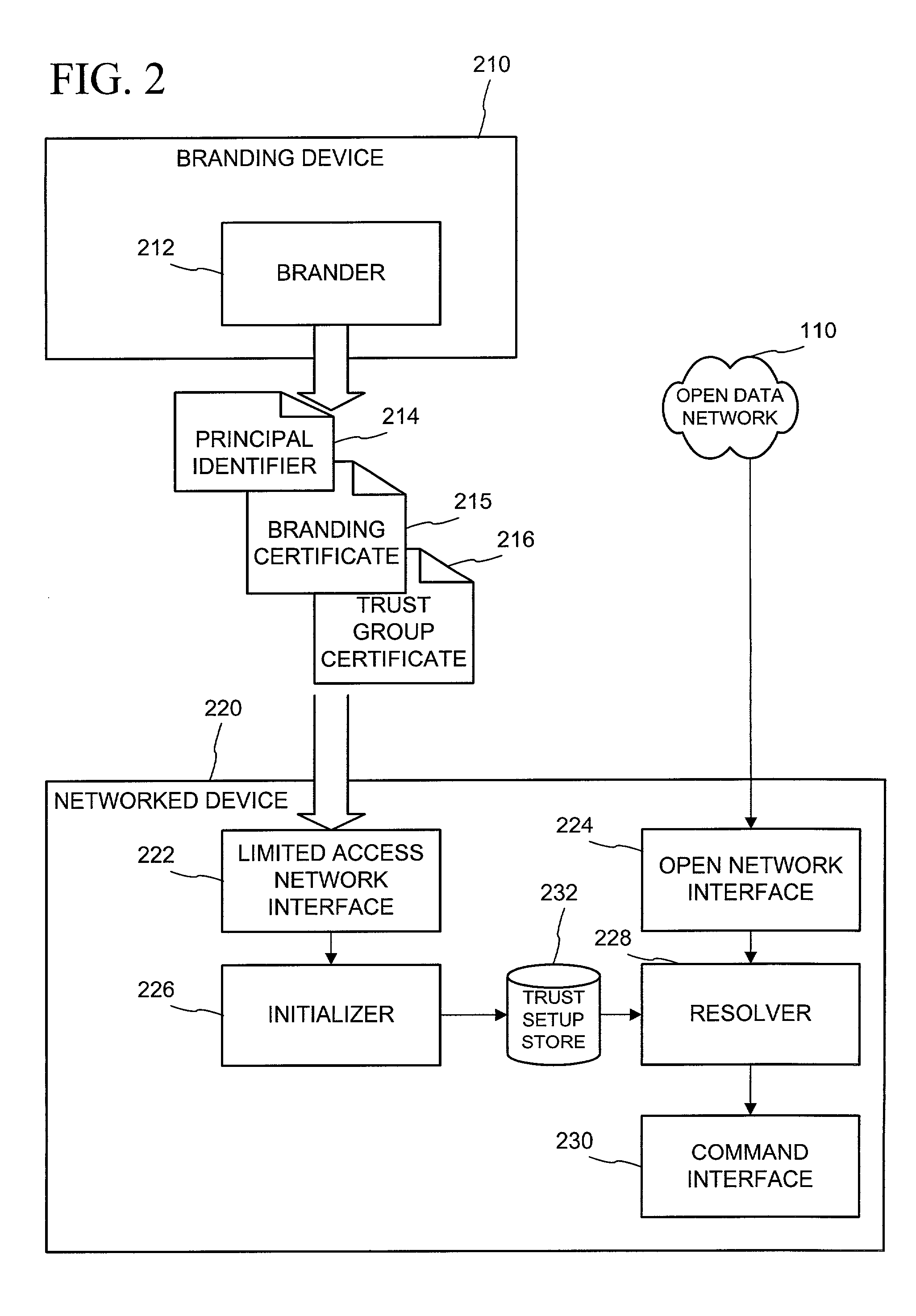Networked device branding for secure interaction in trust webs on open networks
a networked device and trust web technology, applied in the field of networked device branding for secure interaction in trust webs on open networks, can solve the problems of multiple user access, identification information, difficulty in setting-up or configuration of devices with the necessary authentication, etc., and achieve the effect of reducing the cost of computing and networking technologies
- Summary
- Abstract
- Description
- Claims
- Application Information
AI Technical Summary
Benefits of technology
Problems solved by technology
Method used
Image
Examples
example 1
CD and Speakers
Introduction
[0250]A CD player and speakers have both been connected to a broadcast type network such as wireless or power line network. Anyone who is within the broadcast area has the ability to communicate with both the CD and Speakers. That means that anyone, anywhere can use the CD or Speakers.
[0251]To protect against unauthorized access both devices will only accept commands over the broadcast medium if they have been signed and / or encrypted by a trusted principal.
[0252]The process of establishing trust is referred to as “branding.” Both devices would be enhanced with a non-broadcast networking type like USB or a limited broadcast networking type like infrared. The devices will accept unsigned / unencrypted commands through the limited networking connection. This will let the device be branded in a more secure manner.
[0253]One can imagine, for example, a hand held device such as a WinCE machine which uses an infrared transmitter or a USB connection to attach to the ...
example 2
[0264]In the section “Providing the CD with a signed certificate which proves the CD is a member of a group” above, a signed certificate was presented where the branding device certified that the CD was a member of the local group. However the owner of the CD player is letting his friend borrow the CD player and so no longer wishes the CD player to have access to his private network. So the branding device issues a revocation. A revocation is identical to a certificate, except it says that something is not true rather than something is true.
[0265]
Hash of the certificate inside the valueelementHash of Branding Device's Pub KeyThis is a digitalsignatureHash of Branding Device's Pub KeyHash of CD Player's Pub KeyHash of Group's Public Key
[0266]The only thing different about this certificate from the original is that this certificate uses the negtag XML element instead of the tag XML element.
[0267]Having described and illustrated the principles of our invention wit...
PUM
 Login to View More
Login to View More Abstract
Description
Claims
Application Information
 Login to View More
Login to View More - R&D
- Intellectual Property
- Life Sciences
- Materials
- Tech Scout
- Unparalleled Data Quality
- Higher Quality Content
- 60% Fewer Hallucinations
Browse by: Latest US Patents, China's latest patents, Technical Efficacy Thesaurus, Application Domain, Technology Topic, Popular Technical Reports.
© 2025 PatSnap. All rights reserved.Legal|Privacy policy|Modern Slavery Act Transparency Statement|Sitemap|About US| Contact US: help@patsnap.com



